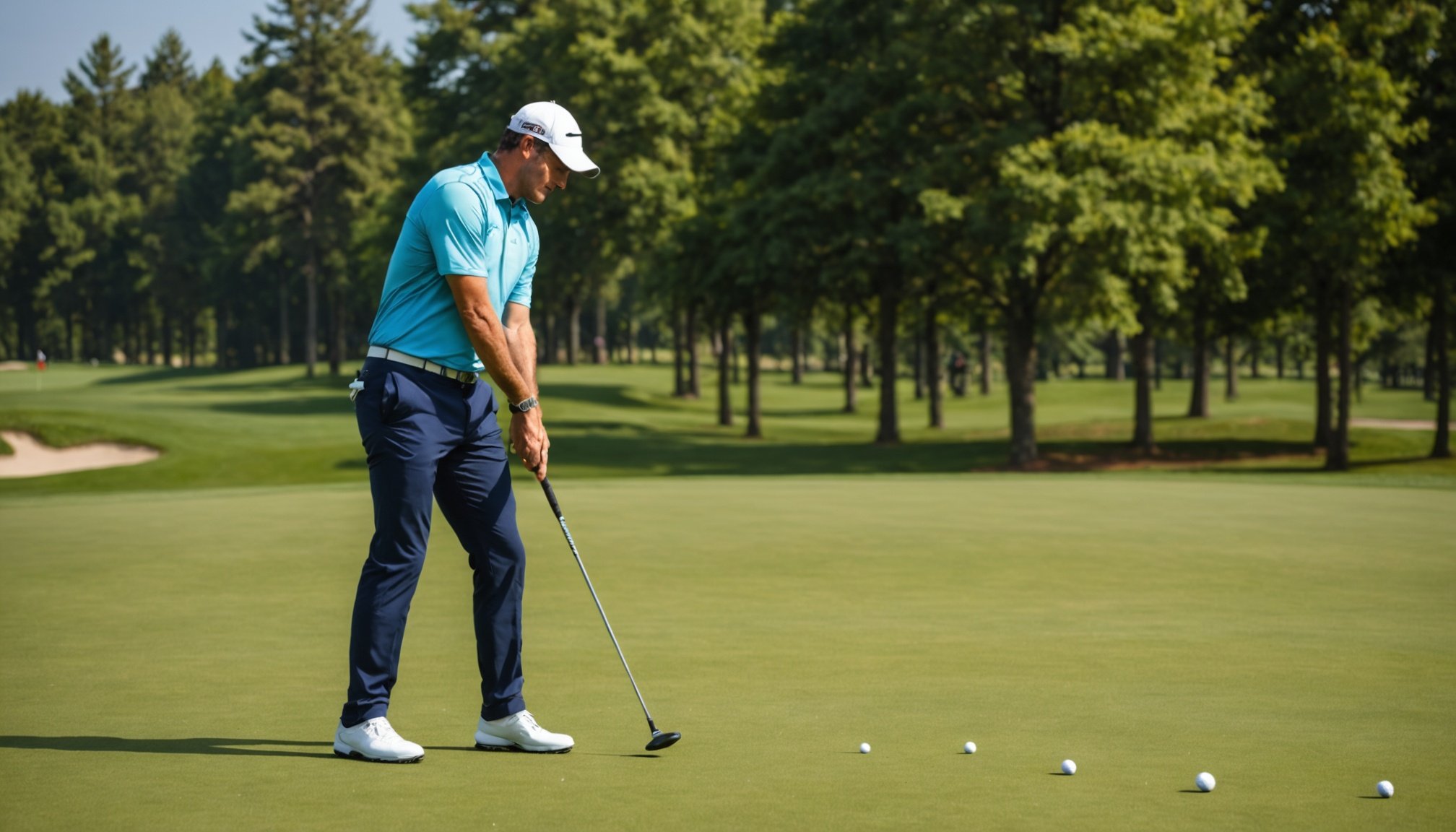Understanding Biomechanics in Golf
Biomechanics, the science of movement of a living body, is crucial for optimising golf performance and enhancing understanding of the body’s mechanics in sports. In essence, biomechanics evaluates forces and their effects to improve performance and prevent injuries.
Applying biomechanics to golf helps in dissecting how golfers swing and move. Golf swings involve multiple joints and muscles working in harmony, requiring precise coordination to generate optimal power. By analysing movement patterns, one can identify areas needing improvement, such as timing, stance, and posture, directly correlating with performance improvements on the course.
Also read : Unlocking the power of technology: transforming performance analysis for uk cricket teams
Moreover, biomechanics aids in designing training programmes that not only boost swing efficiency but also introduces preventative strategies to mitigate injury risks. For example, understanding the body’s dynamics can lead to more effective warm-ups and targeted strengthening of specific muscle groups critical in golf. These interventions are grounded in sports science and tailored to meet the unique demands of golf.
Ultimately, biomechanics serves as a bridge between theoretical sports science and practical, tangible results in golf performance, offering tools to refine techniques and extend the longevity of a golfer’s journey. Embracing these insights can significantly enhance both enjoyment and results in the sport.
Also read : Enhancing athletic performance: how multi-sensory training rooms revolutionize various sports
Key Biomechanical Principles for Golf Performance
Understanding the mechanics of a golf swing is essential for improving a player’s performance and addressing physical challenges. At the heart of optimized golfing is body alignment, where maintaining a proper stance and posture plays a crucial role in achieving swing efficiency. A golfer’s alignment impacts how effectively they harness energy and maintain balance, directly influencing shot accuracy and force generation.
Body Alignment in Golf
Proper body alignment serves as the foundation for powerful and accurate swings. Ensuring the body is correctly positioned impacts swing efficiency, enabling golfers to transfer energy seamlessly from the body to the club. Precise alignment is integral to achieving consistent results on the course.
The Kinetic Chain Effect
Incorporating the kinetic chain effect into a golfer’s mechanics emphasizes how each body segment contributes to the swing. From the feet through the torso to the arms, each link in the chain plays a part in generating power and controlling direction. Disruptions in the chain can lead to inconsistencies in shot performance.
Ground Reaction Forces
Understanding ground reaction forces allows golfers to maximize power delivery during a swing. By effectively using the ground’s resistance, players can boost their swing strength. Properly leveraging these forces results in a more forceful and accurate shot, enhancing both distance and precision.
Analyzing Common Golf Injuries
Golf injuries often affect both amateur and seasoned players alike, influencing their overall performance and enjoyment of the game. Understanding these injuries from a biomechanical perspective provides insight into their underlying causes. Typically, wrist, elbow, and lower back issues dominate the list of common concerns.
Biomechanics reveals that improper swing mechanics or poor body alignment heighten the risk of injury. For instance, excessive wrist movement during a swing can lead to golfing-specific conditions like “golfer’s elbow” or wrist tendonitis. Additionally, inappropriate posture, especially during the backswing, might cause undue stress on the lower back, explaining the prevalence of back pain among golfers.
The long-term impact of these injuries extends beyond physical discomfort. Repetitive strain can lead to chronic conditions, forcing players to modify their playing style or even step away from the sport. By addressing these issues through comprehensive biomechanical analysis, golfers can make informed adjustments in their technique to reduce injury risk. Recognizing the root cause and integrating preventive strategies can help maintain performance levels while prolonging the enjoyment of golf. The harmony between the sport’s demands and body mechanics is pivotal for a sustainable golfing journey.
Strategies for Injury Prevention
Incorporating biomechanics into a golfer’s routine is crucial for effective injury prevention. Understanding precise movement patterns, golfers can significantly reduce injury risks. One key strategy is engaging in effective warm-up routines. Warm-ups should include dynamic exercises tailored to golf, aimed at gradually increasing heart rate and preparing the muscles and joints for movement. Simple exercises like arm circles, leg swings, and torso twists can improve circulation and flexibility.
Stretching plays a pivotal role in maintaining muscle elasticity. Effective stretching not only enhances flexibility but also aids in preventing strains and tears. Golfers should focus on stretching the shoulders, hips, and back to ensure they’re adequately prepared for the demands of the game.
Strengthening key muscle groups is another preventive measure. Core exercises, such as planks and bridges, support swing efficiency by stabilising the torso. Similarly, exercises targeting the upper and lower body, including squats and push-ups, are beneficial.
Finally, modifying gameplay habits reduces strain. Taking regular breaks and prioritising technique over force allows for sustained performance. By integrating these biomechanical strategies, golfers can significantly minimise potential injuries, extending their ability to enjoy and excel in the sport.
Implementing Biomechanics in Training
Incorporating biomechanics into golf training can significantly bolster performance enhancement and refine practice techniques. To achieve optimal results, understanding the mechanics of movements through technological aids like motion analysis can be transformative.
Utilising Motion Analysis
Motion analysis offers invaluable insights into a golfer’s swing by breaking down each movement and identifying areas needing improvement. By reviewing this data, golfers can make informed adjustments to their technique, enhancing both efficiency and power.
Setting Realistic Goals
Goal setting, grounded in biotechnological assessments, is crucial. An assessment provides a baseline for improvement, enabling golfers to set attainable targets. This realistic approach prevents frustration and encourages consistent progress, keeping motivation high.
Incorporating Insights into Regular Practice
Regular practice sessions can integrate biomechanical findings by focusing on precise movements. Educating players about biomechanics ensures they understand each adjustment’s purpose, which deepens their connection to their training regimen.
By leveraging these biomechanics tools, golfers refine their techniques with a clearer understanding of their physical dynamics, leading to improved performance and reduced injury risk. Integrating these methodologies into training empowers golfers to reach their full potential on the course, while staying aware of their physical capabilities.
Case Studies and Expert Opinions
Incorporating real-world applications and expert insights is key to understanding how biomechanics shapes golf performance. Successful biomechanical programs demonstrate marked improvements in players’ swing efficiency and overall skills.
Successful Biomechanics Programs
Programs that integrate sports science principles show significant advancements. For instance, a notable initiative focused on refining force generation and movement patterns helped professional golfers increase their drive distance by analysing their swing mechanics.
Interviews with Golf Experts
Interviews with seasoned golf coaches reveal a strong belief in biomechanics’ impact. These experts highlight that precise body alignment and comprehension of the kinetic chain effect are pivotal in achieving consistent shot performance and preventing injuries.
Success Stories from Amateur Golfers
Amateur golfers sharing their experiences provide relatable, firsthand accounts of biomechanics’ benefits. One golfer said that by understanding the kinetic chain, their accuracy improved, leading to more satisfying rounds. Such success stories underscore how grasping biomechanics can elevate the golfing experience.
Collectively, these insights and stories illustrate biomechanics’ critical role in maximising golf performance and injury prevention. By drawing on expert opinions and case studies, golfers can appreciate the tangible benefits of integrating science and practice.






